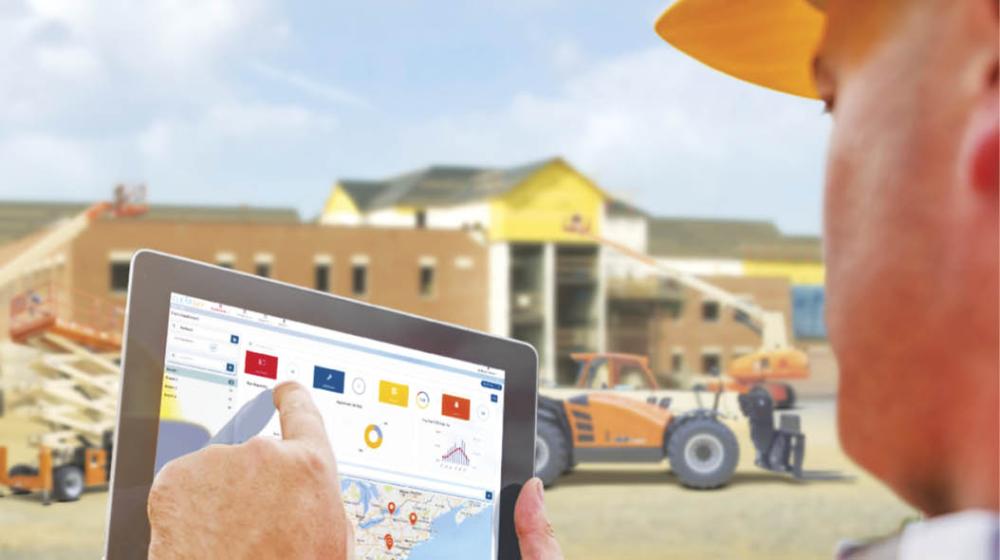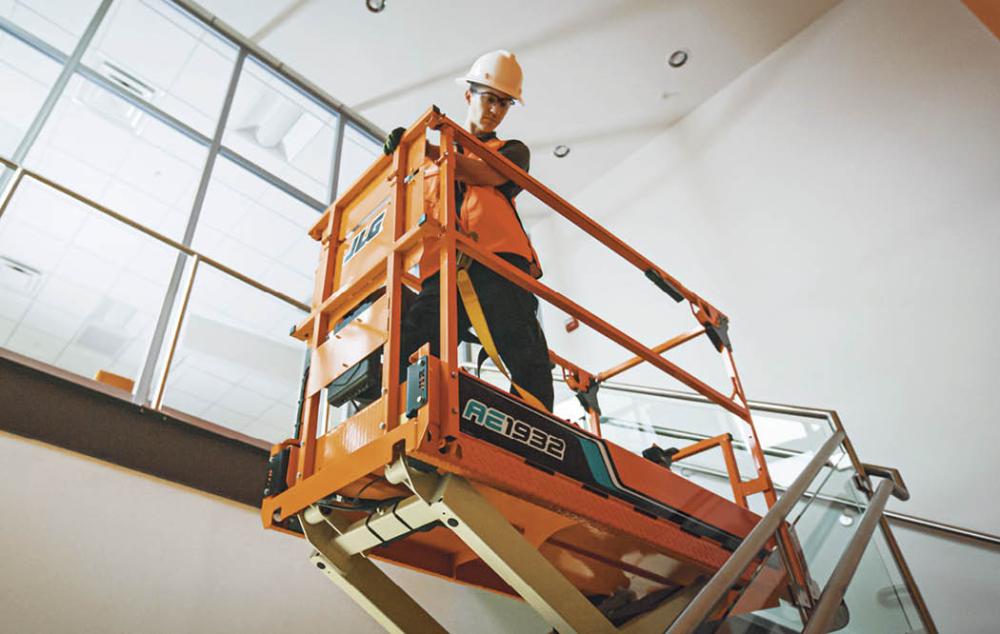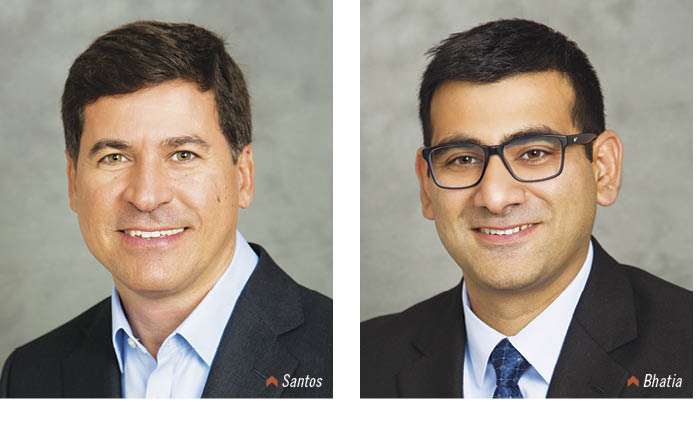


By: Katie Holt
August 21, 2023
As construction technology continues to grow and change, so does JLG’s vision for job sites and advancements in machine technology.
In recent years, the construction industry has witnessed remarkable advancements in machine technology. JLG, a leader in the access segment market, has positioned itself at the forefront of this revolution.
At this year’s ConExpo-Con/Agg, Lift and Access was fortunate to be able to sit down with Rogerio dos Santos, JLG VP of Product Strategy/Management and Shashank Bhatia, JLG VP of Product Engineering, to talk about the company’s overall product philosophy, their vision for the future of job sites, and the exciting technologies they are developing to shape the industry.
With a comprehensive product philosophy and a focus on innovation, JLG aims to cover the entire spectrum of access needs, from low-level machines to heights that were once unimaginable.
But, their vision goes beyond just providing equipment; they strive to anticipate future trends and create solutions that align with the changing landscape of job sites.
L&A: Can you tell me about JLG’s overall product philosophy?
Santos: I would say our philosophy is to continue to protect our core, (access equipment) expand those categories, and look at adjacencies that go along with the access segment and their spots of inability.
Bhatia: All the tech that comes along on the product side is really important to us. Once we make a product, it is not just about what we have today, but where is the future is going to be.
L&A: That leads to my next question. What does the job site of the future mean to you? What do you think that looks like in the next ten to 20 years?
Bhatia: The job site of the future is obviously going to evolve. First, it’s going to get much cleaner, and more sustainable. The second piece of this is going to be connectivity. You will see rental companies connect to the products. You will see the end users connect to the products with the rental companies. Overall, I think there’ll be a much more seamless integration of product connectivity.
Santos: Connectivity is the biggest change. Clean energy is significant as well. We’re aware of the fact that with everything being connected, there is going to be an ecosystem going, from charging the machines to connecting the machines to how the machines are being used. We need to help build that.
L&A: The total lifecycle of the machine, right? Speaking of connectivity, JLG’s solution for fleet management is its ClearSky platform. What has the customer feedback been like on this?
Santos: We have over 50,000 assets connected today with ClearSky, and I think that speaks to the history that we have good acceptance with the product. Customers keep asking for more features. I think we’re over that initial early adoption curve, and we’re now into the growth phase of customers wanting it automatically standard on the machines. It’s going really well.
L&A: What are your strategies and what is JLG’s roadmap for new products, technologies, solutions, etc.?
Bhatia: We spoke about electrification and connectivity. The other big piece that will tie this whole thing together and which we are in the nascent stages of, is autonomy. The safest place for the person to be is on the ground. If you think about it, we make products that take people and materials up at height, but if you can keep the people on the ground and get the work done at height, that’s the best place to be.
That’s what our goal is. How do you eliminate the basket and also get the work done at the same time? Autonomy cannot stand by itself. It needs connectivity. Autonomy needs precision, which comes by electrification. If you see this triangle form, autonomy, electrification, connectivity, these are the three areas that are needed to get us to the future wave of job sites.
Santos: We’re investing now. We’ve been doing a lot of work in those areas. The other thing that you might see we’ve done recently; we’re revising our old designs and bringing in machines that have the same performance but are lighter. So going back to Shashank’s point on electrification, its very important that your machine is as light as possible so your energy consumption is the best that it can be.
For example, we just launched two models of SkyTrack telehandlers. They are significantly lighter than the previous versions. They’re not electric yet, but it puts us on a path for when we’re ready to start electrifying those products. We’re conscious of where we need to be.
L&A: That’s good to know. If you don’t mind, I want to go back to the autonomous equipment for a minute. Is JLG doing any research on the customer adoption of that?
Bhatia: We have JLG Mobile Control, which if you think about it, you are basically connecting with the machine through telematics and then driving the machine autonomously. Customer adoption of that is really great.
People want to use that product because it makes the machine safer. You can load these machines on a deck, on a flatbed, not being on the machine, but staying away from it. The machine can go through a door because you are not in it. You’re standing with the machine, walking with the machine.
L&A: Now or in the future, what are you most excited about personally in terms of product strategy and/or management?
Santos: I’m most excited about the opportunity we have right now to redesign our products for electrification, and also to work with customers to meet the new needs that are coming with either autonomy or expanding our products into new markets.
Also, expanding our offerings from just being a platform machine into a machine that can do a job without the person being in it. That is exciting for us because if it opens the door for a boom or scissor lift to be more than just a platform machine. It can be a robot, it can be a tool that is doing a job.
We’re on the cusp of working with customers and identifying what applications are more suitable for that and how we get there. As a company, we’re always looking to expand our product portfolio. We do that every year. It’s constant. There’s a lot of good work coming.
L&A: With autonomous vehicles, do you think that’s going to change telematics and tracking fleet management, if they’re having to look at multiple machines, see multiple jobs on their own, etc.?
Santos: Yeah, good changes are coming to accommodate this.
Bhatia: JLG will own the whole platform, the machine and telematics software, the cloud infrastructure, and the ecommerce platform that will transmit it.
The machine is going to be more than just a tool. It’s going to get the job done. I think that mindset has to change for this product. Once it changes, then the possibilities are endless. Currently, the machine is doing the job at height, however, in the future, a person on the ground monitoring the machine will be able to do that. That is possible with connectivity.
L&A: Do you think that opens up any doors for adaptability for people that may have disabilities? Maybe more opportunities for people to operate those machines that maybe they wouldn’t have if they were up on the platform?
Bhatia: It does. Definitely.
L&A: That’s very interesting. Looking forward to hearing more about that in the future. When it comes to specific job site applications, construction or otherwise, are there any that you think would benefit most from this increase in technology on job sites? Apartments, malls, etc.
Bhatia: Well, as one example, Rogerio pointed out machine compactness and its weight being lowered. We have heard customers want lighter machines because of multi floor buildings.
Those buildings require the machines to have lower ground bearing pressure. That’s only possible if you’re going to reduce the weight of the machines.
Machines need to go get into freight and service elevators on the job site. That’s only possible if the machine is compact.
L&A: With increasing focus on lower emissions, is JLG looking at any hydrogen technologies?
Santos: We’ve been investigating this with our partners. At this point, we’re not saying no to any technology. We’re open to exploring all the possibilities.
Bhatia: It is going to be an ‘and’ state. It’s not going to be all or nothing. It is going to be all the alternate fuels, electric batteries, hydrogen, etc. Not one solution can make this whole thing zero emissions.
L&A: What kind of feedback are you getting from dealers and rental houses about the technologies. Anything specific that you’ve seen or heard the most?
Bhatia: I think I’ll start off on the connectivity side. It’s a massive benefit for them to be able to know where the product is at all times.
One area that we’ve heard from them that we need to shore up is on the ecosystem of electrification.
We’ve got all these products, but how do we charge it? So that’s the feedback we’re getting. We’ll come out with solutions in the future to solve this.
Santos: The other positive feedback that we’re getting from other companies and dealers is that they want us to accelerate all of this. This is not just a North America thing, it’s a global trend, right? Everyone wants to start cleaning up the job sites faster.
Some of it is regulatory in certain countries, other companies just want to be on the forefront of the technology. We’re at the moment now where we have had electric products for close to 30 years.
L&A: Is there anything else you want to add?
Bhatia: One of the big things for us is making sure that the machines that are used on the job site are extremely safe. One of the ways safety is achieved is by keeping the operator less fatigued. How do you do this? Making the machine level all the time so that you are not bouncing in the platform. We have done that with our self-leveling chassis. In the future that portfolio is going to completely expand into the rest of those family of products.